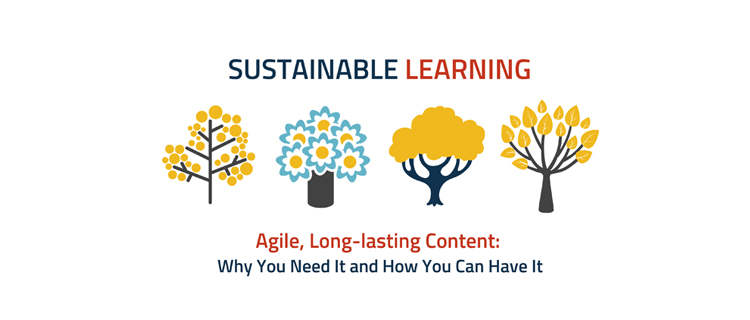A long-term research project commissioned by Middlesex University for Work-Based Learning found that of a sample of 4,300 workers, 74% felt that they weren’t achieving their full potential at work due to a lack of development opportunities. In that light, consider a report by Training Industry magazine, which states that “the average training expenditures for large companies increased from $14.3 million in 2016 to $17 million in 2017.
It seems clear that several organizations are willing to go that extra mile and invest money in training their employees. These organizations are doing so to ‘enable’ their employees to perform better. But in times of tech-driven disruption, learning is now more than an event. It is a process, where a combination of the right Learning and Development (L&D) tools and techniques needs to constantly drive behavior change in employees to help companies become agile.
Confirmation can be found in a Bersin by Deloitte report, which observes that organizations that have strong cultures of leadership and learning outperform their peers.
This is where eLearning has a key role to play. And technology can help amplify eLearning’s impact.
Here is a list of technologies that can help drive effective future learning in organizations:
Artificial Intelligence (AI)
AI has taken the world of content curation by storm and has clear applications in eLearning. Broadly referring to technologies that can learn as they perform a set of tasks, it can also include machine learning to make various algorithm-based decisions. The simplest example is Netflix’s personalized recommendations, which uses algorithms to help its users find shows and movies that are of interest to them.
Coming back to eLearning, AI can be applied in several areas. Some applications have already been spoken of for a while now. Consider a chatbot answering all the questions of the learner, or a quiz which churns out several questions based on the learner’s previous responses.
AI can help define the level of the learning ability of the user and add real-time questions to test whether they are ready to proceed to the next level or not. AI could create dynamic learning paths, knowledge checks, and assessments, all of which can be mapped to the specific learner’s ability or grasping power.
AI can also be used to offer content in dissimilar content formats. For instance, it can be used to create a chat-based interface to drive a comprehensive understanding of a concept and encourage one-on-one, personalized tutoring.
AI can also identify the key areas where categories of learners are deficient and help organizations focus more on those areas. Based on the information, the technology can help generate new problems from the source material or generate better material and immersive experiences, as opposed to traditional learning methodologies.
AR/VR – Augmented Reality and Virtual Reality
AR and VR both offer an enhanced interactive experience for learners in eLearning. The AR experience ‘augments’ real-world objects using computer-generated images and animations. VR, on the other hand, creates a computer-generated experience within a simulated environment.
Both of these technologies create endless possibilities for eLearning. Although there are challenges like external units, bulky headgear, and limited vendors creating content, these still offer a bright future to drive effective training.
The technology can be used to improve product training. This can help improve understanding of features and product explanations could become clearer. In dispersed learning environments and store/franchise operations, the technology could play a key role in improving customer objection handling.
Moreover, AR/VR can help enhance content quality by simulating real-world scenarios and applications. This will lead to mass acceptance of the training materials and better engagement from the learners. The result? More contextual learning and fewer dropouts from the courses.
Overall, these can act as a training tool that can help organizations deliver the best learner experience. Although AR and VR are at a nascent stage, the future can see them made available on affordable devices in a variety of eLearning modules.
Big Data
Big data and analytics offer an array of benefits to the eLearning community to drive improvements in learning content. In-depth reports carry more diagnosis, which can significantly improve the learning content and delivery. This can help offer maximum impact for the learners and therefore, for the organizations.
By identifying the underlying patterns, Analytics can deliver insights like the modules that are visited the most and detect which were most engaging for the learners. Also, it can help predict the areas where the learners may struggle or excel. Since Analytics can also be driven in near real-time, it along with AI can be used to assess and implement changes that can help fine-tune the entire eLearning strategy. Although LMS’ offer a level of data of learner performance, Advanced Analytics, especially in conjunction with AI, can offer a much greater depth of insight to drive fine-tuning of the learner experience.
Most importantly, Analytics can help design personalized training by understanding how specific learners are acquiring information and what works for them particularly. This, in turn, will help organizations offer a better and more impactful learning experience.
Expand the Horizon of Effective Training with Technology
To sum up, these three technologies can help organizations increase the reach and consumption of eLearning and make it more widely accessible. Technology can also help integrate learning with the flow of work by making it contextual. By becoming more universal and more relevant, learning can be elevated to assume a place as a key element of the workplace strategy.



